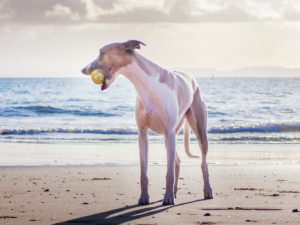Wondering How Much to Feed Your Dog?
Share
[Sassy_Social_Share]What to feed your dog depends on many factors. The main two are your dog’s size and age. Larger and older dogs need extra nutrients to support their joints. Younger dogs need more calories than older ones. Small dogs can’t easily bite the size of kibble a medium or large dog can, so they need smaller kibbles. But once you decide what the best type of food for your dog is, you have to figure out how much to feed your dog based on weight.

When you go to the pet store to buy a bag of Connolly’s RED MILLS Leader, Go Native or Engage, ask them for a measuring cup. These cups are available at no charge. Every bag of food tells you how much to feed your dog based on weight. You’ll see that the brand-specific cup is marked with different lines for each type of feed. This is because the kibble size is different. The size differs according to the type of food and the size of the dog. For example, the Leader for large dogs is a different line on the cup than the Leader for small dogs. It is very important that you are measuring using the correct line on the cup for the exact type of feed you are using.
How to Weigh Your Dog
Of course, to determine how much to feed your dog based on weight, you have to know how much your dog weighs. Your vet should weigh your dog at every visit. If your dog’s size has changed or if you didn’t take note of the weight, you can weigh most dogs at home. The easiest way is to first weigh yourself and take note of your weight. Then lift your dog and weigh yourself and your dog while you hold her. Subtract your weight from the second weight when you were holding the dog. The proper technique to lift a dog is to place a hand under the chest and under the bum and hold the dog close to your body. Bend your knees to reach your dog so you lift with your knees, not your back. If your dog is too large to safely lift, contact your vet about coming in to use the scale there.
What If You Dog Is Overweight or Underweight?
Two aspects of your dog’s weight will determine how much she needs to eat. First, her weight tells you how much she needs to eat. If she is a healthy size, you want her diet to keep her there by feeding the amount recommended on the bag of food. She needs enough calories to fuel her activity level, but not so many that she starts to gain an unhealthy amount of weight. The second aspect is whether or not she is at a healthy weight. If your dog is underweight or overweight, that will also influence how much food you should give her.
If your dog is very overweight, your vet might recommend a specific food to help him lose weight and will tell you exactly how much to feed. But if he is just getting a little chubby, that suggests you need to either reduce the amount of food he’s getting or increase how much exercise he gets. The first food to reduce is treats.
A dog that is underweight should be seen by a vet, who can determine the underlying issue. In this situation, it is best not to simply follow the recommendation on the dog food bag about how much to feed your dog based on weight because you want to change the dog’s weight. While many dogs in rescues are below their ideal weight because they were going hungry while stray, a very low weight can also indicate a serious illness. If your dog starts to lose weight, that is a sign you need to contact your vet. He might just need more food, or he might require medical treatment or a special diet.
Your Dog’s Activity Level Matters

A very active dog will need more food than a less active dog of the same size. If your dog is extremely active, and you are feeding Leader food, it is okay to increase the amount of food a bit. Of course, if your dog is herding livestock on the farm or going some other intense activity regularly, Engage is a better feed for him. Because Engage is made for very active dogs, you can simply follow the recommendations on the bag for how much to feed your dog based on weight.
Some dogs follow an annual pattern where they gain weight in winter because they are getting less exercise. If that sounds familiar, it makes sense to slightly reduce the amount of food your dog eats when the weather is bad enough that you are walking less. Other dogs remain active year ‘round and might need a little extra food in winter because they are burning extra calories staying warm.
A Word about Switching Foods
If you are switching the food you feed your dog, you might notice each food has a different recommendation for how much to feed your dog based on weight. The best way to switch a dog’s food is gradually. For the first week, give your dog one third of the recommended amount of the new food and two thirds of the recommended amount of the old food. Be sure to use the appropriate measure for each. They are specific to the exact brand and type of food. For the second week, feed half of the recommended amount of both foods. This might not be an equal amount of each food. Then for the third week, you can feed two thirds of the recommended amount of the new food and one third of the recommended amount of the old food. After that, you can feed the new food exclusively.
It’s not unusual for your dog to have slightly looser stools or be mildly constipated when changing food. But if you see dramatic upsets to their digestion, talk to your vet.





